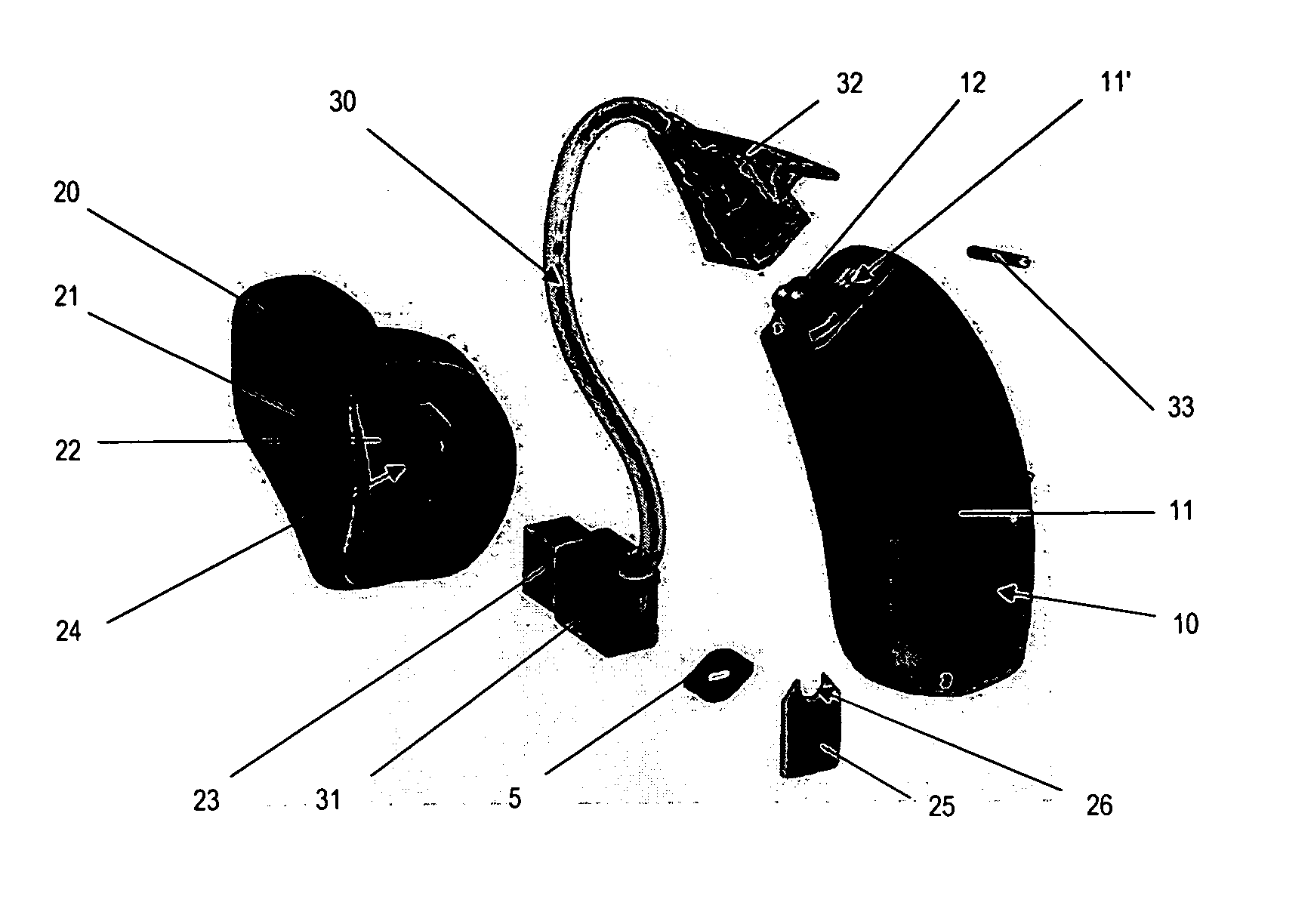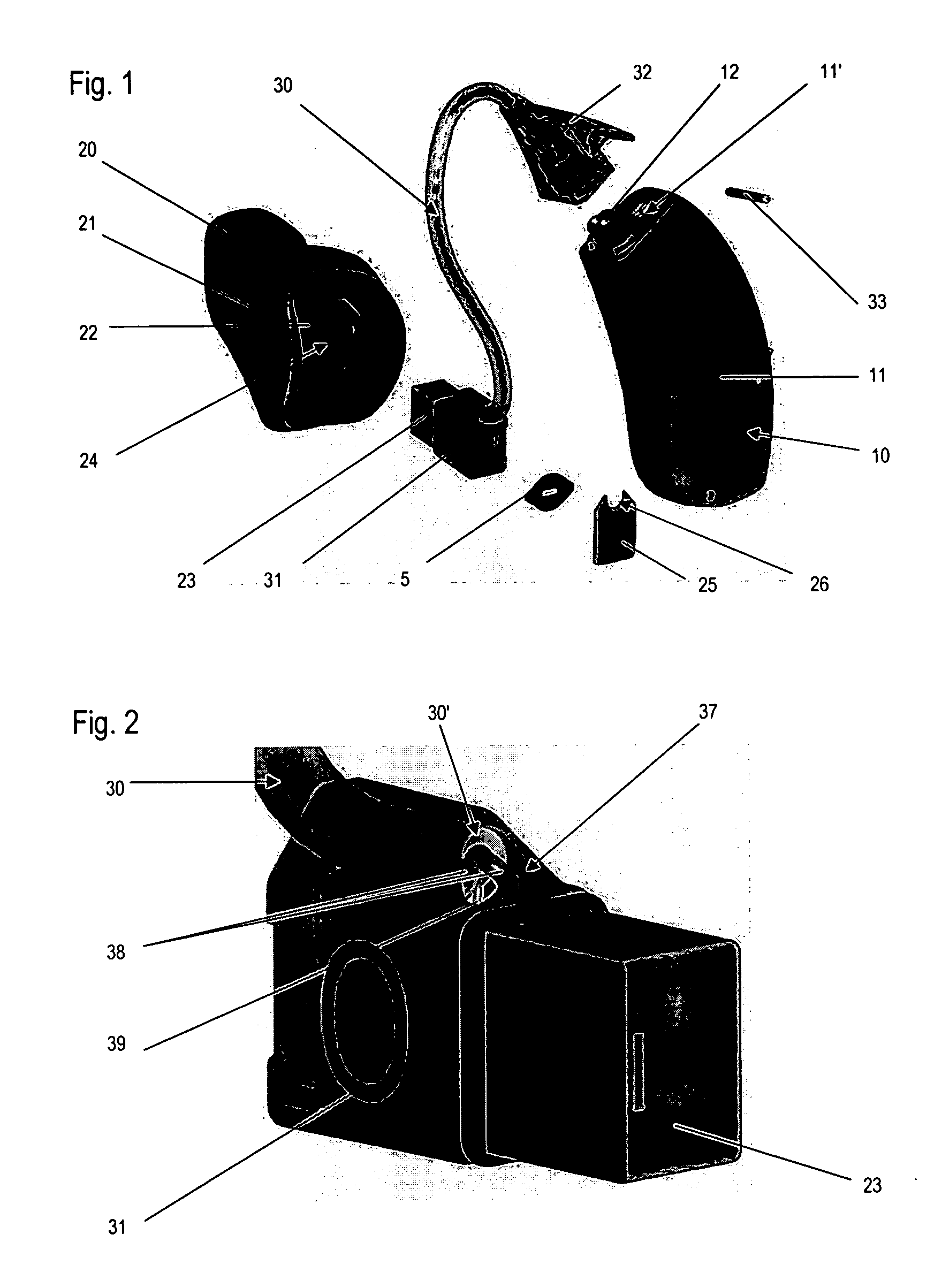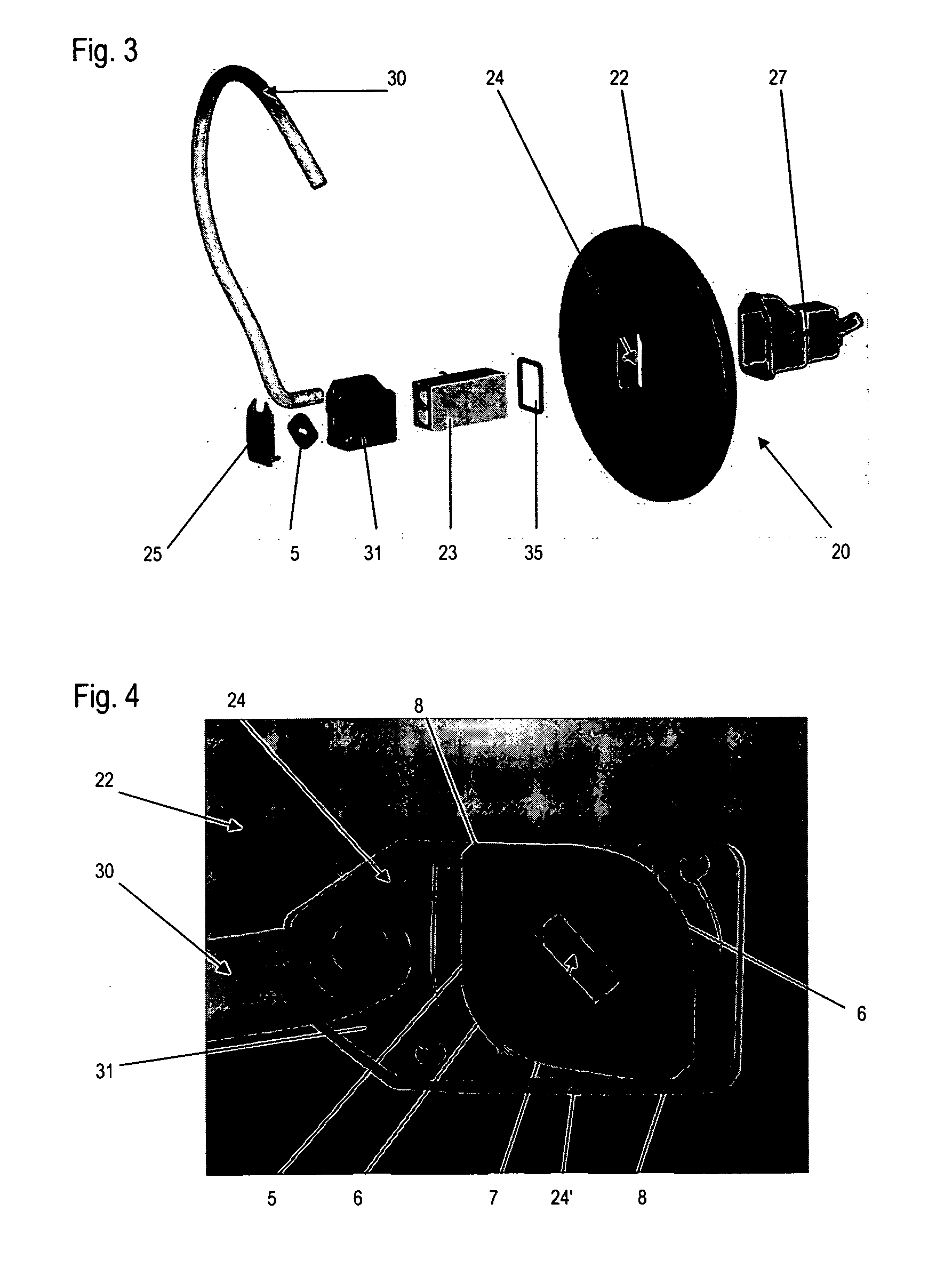Hearing device with locking system for connectors
- Summary
- Abstract
- Description
- Claims
- Application Information
AI Technical Summary
Benefits of technology
Problems solved by technology
Method used
Image
Examples
Embodiment Construction
[0038] Referring to FIG. 1, a first embodiment of a hearing device according to the present invention is shown in its partly disassembled state. The hearing device comprises a BTE-device 10 (behind-the-ear) as a first component, an ITE-device 20 (in-the-ear) as a second component and a tube 30 as connecting means between the BTE-device and the ITE-device.
[0039] The BTE-device 10 has a housing 11 adapted to be worn behind the ear by the user and containing common electronic modules, such as a sound processing circuitry, microphone and battery.
[0040] The ITE-device 20 has a housing 21 adapted to be inserted into the outer part of the ear canal. The shape of housing 21 in this example is individually shaped to fit exactly into the ear shell and / or ear canal of an individual person. This is done by applying an individual fitting process by a specialized fitter. A faceplate 22 is arranged at the back end of housing 21, to receive the active components of ITE-device 20 as well as tube 3...
PUM
 Login to View More
Login to View More Abstract
Description
Claims
Application Information
 Login to View More
Login to View More - R&D
- Intellectual Property
- Life Sciences
- Materials
- Tech Scout
- Unparalleled Data Quality
- Higher Quality Content
- 60% Fewer Hallucinations
Browse by: Latest US Patents, China's latest patents, Technical Efficacy Thesaurus, Application Domain, Technology Topic, Popular Technical Reports.
© 2025 PatSnap. All rights reserved.Legal|Privacy policy|Modern Slavery Act Transparency Statement|Sitemap|About US| Contact US: help@patsnap.com



